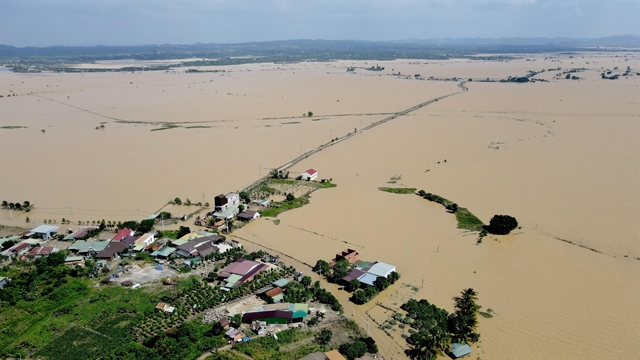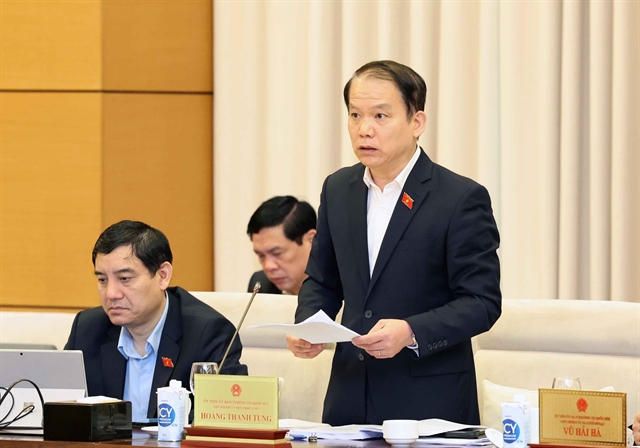 Politics & Law
Politics & Law


|
| Hoàng Thanh Tùng, head of the National Assembly Committee on Legal Affairs, presents the report on the revised capital city law. — VNA/VNS Photo Nhan Sáng |
HÀ NỘI — The draft Law on the Capital City has been adjusted to allow more authority to Hà Nội in organising its management and operational structure as the capital of the country.
The document was the centre of discussion at the National Assembly (NA) Standing Committee on Thursday morning, which is holding its 31st session from March 14-19.
Following the current NA’s sixth plenary session in October last year, the draft was revised and now has seven chapters and 55 articles (with six articles from the previous version removed and two new ones added).
According to the draft, Hà Nội People’s Council has the authority to stipulate the establishment criteria and decision to form, restructure and dissolve departments and administrative organisations under the city People’s Committee.
The standing committee of the People’s Council will operate full-time and have no more than 11 members. This committee can also decide urgent matters and report to the council at the next meeting session.
Hà Nội People’s Council is also assigned to detail the procedures to adjust the general planning of its urban zone, functional areas and specialised technical infrastructure.
It can also make decisions on investment policies regarding urban railway projects following the Transit Oriented Development (TOD) model, projects using public investment or partially or fully funded by the state, as well as interprovincial public investment projects with a maximum capital of VNĐ20 trillion (US$810 million).
Meanwhile, the city People’s Committee will approve construction projects in riverside areas.
The draft law also presents two options regarding Article 19 which specifies the limit on underground land use.
The first option stipulates that people with land use rights are allowed to use the underground land 15 metres below the surface within the vertical boundaries of their land plot.
They can use the land outside of this limit with justified planning, but will have to pay and obtain permission from authorities in alignment with the government’s regulations.
The second option states that the government will decide the depth limit of underground surface that land users can utilise. The remaining aspects are the same as Option 1.
Chairman of the NA Office Bùi Văn Cường said he agrees with Option 2, as it will allow the government and Hà Nội authorities to be flexible and proactive, avoiding implementation difficulties as not every case is the same.
Underground land use and management is a challenging, complicated issue and a concern not only in Việt Nam but also in many major cities in the world, he said.
Deputy NA Chairman Trần Quang Phương said that more research, evaluation and comparisons need to be conducted for appropriate regulations regarding effective underground land use.
The rights and responsibilities of land users on this matter must also be transparent to harness the added value of land, he said.
Phương also recommended that the law specify the depth limit for land use.
Regulations on the salaries and additional incomes of public officers are also open for comments from authorities before submission and approval at the NA’s seventh plenary session.
Speaking at the meeting, NA Chairman Vương Đình Huệ said that fundamental understanding and agreement have been achieved on the draft capital city law in terms of vision, thinking and viewpoints between state agencies.
The draft goes into detail about the authority and responsibilities of different management units and levels in comparison to the existing law, but will still need to be reviewed to ensure clarity, feasibility and compliance with the legal system, he said.
The NA Chairman also noted that future regulations must take into account current issues such as pollution, traffic congestion and inundation, and allocate adequate resources and authorities to address these problems. — VNS




